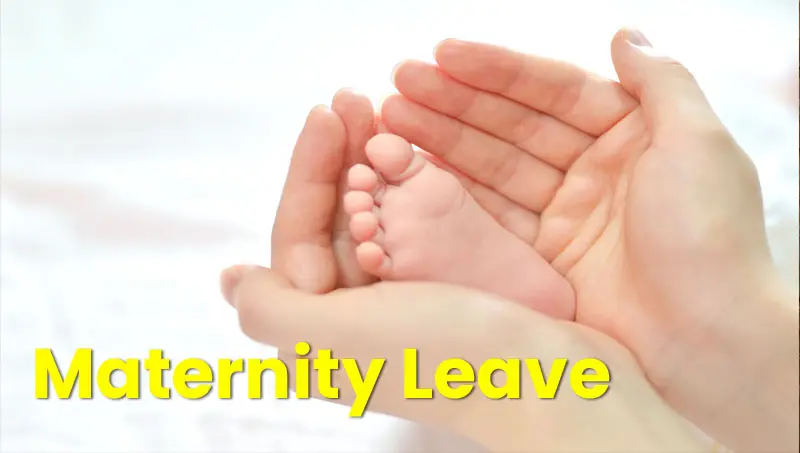Introduction
In the dynamic regulatory environment of the UAE and DIFC, understanding the nuances of maternity leave laws is crucial for private sector employers. This newsletter offers a deep dive into the legal framework governing maternity leave, providing actionable insights for compliance and best practices in employee welfare.

DIFC Employment Law
Maternity Leave Entitlement
DIFC Employment Law Overview:
Under DIFC Employment Law, specifically Article 37, female employees are granted up to sixty-five (65) work days of Maternity leave, while Paternity leave is granted to male employees who are expecting a child or have recently become fathers through birth or adoption for up to five (5) work days underpinned by a series of eligibility criteria designed to ensure both the employee’s and employer’s needs are met. https://www.difc.ae/business/laws-and-regulations/legal-database/difc-laws/employment-law-difc-law-no-2-of-2019
Criteria for Maternity Leave:
- To be eligible for Maternity Pay during this leave, the female employee must have completed at least one year of continuous employment with the employer.
- The female employee must notify the employer in writing at least eight weeks before the expected week of childbirth.
- The female employee must provide a certificate from a medical practitioner registered with a Competent Authority confirming the expected or actual birth date.
- The female employee must notify the employer in writing at least twenty-one days before the day on which she proposes to begin her maternity leave.
- Notably, this law extends maternity rights to female employees adopting a child under five years old, reflecting a progressive and inclusive approach to family welfare.
Criteria for Paternity Leave:
- Paternity leave is available to male employees who have completed at least one year of continuous employment with their employer and if the male employer notifies the employer in writing at least eight weeks that his wife is pregnant before the expected week of childbirth and notifies the employer in writing at least twenty-one days before the day on which he proposes to begin his paternity leave.
- During paternity leave, the employee is entitled to paternity pay, which is their daily wage for the duration of the leave.
- Paternity leave must be taken within one month from the date of childbirth or adoption.
- Paternity leave can also be taken for adoption purposes, in which case the references to childbirth are treated as references to the date of adoption.
Amount:
During Maternity Leave, the female employee is entitled to Maternity Pay, which is calculated based on their Daily Wage (Monthly wage x 12 months / 260 workdays).
- For the first thirty-three (33) work days of Maternity Leave, the employee will receive one hundred percent (100%) of their Daily Wage.
- For the next thirty-two (32) work days, the employee will receive fifty percent (50%) of their Daily Wage.
No compensation in lieu:
It’s important to note that an Employee is not entitled to receive compensation in lieu of accrued untaken Maternity Leave or Paternity Leave and vacation leave continues to accrue during Maternity Leave, and any Public Holidays falling on a work day during this period will be treated as additional leave, extending the Maternity or Paternity Leave by the duration of the Public Holiday.
Post Birth:
Recognizing the unique needs of new mothers, these employees are entitled to nursing breaks of at least one hour in total during the workday besides the one hour rest and prayer break. This entitlement is in place for six months following the actual date of childbirth, underscoring the importance of accommodating the well-being of both the employee and her newborn under the maternity provision of the law.
Termination due to pregnancy:
An employee has the right to return to work after taking parental leave. An employer is prohibited from terminating an employee’s employment or changing their position or terms and conditions of employment without the employee’s prior written consent due to their pregnancy or parental leave.
By including this provision, the DIFC Employment Law aims to promote equality and prevent discrimination against employees based on their pregnancy or parental status.
UAE Federal Decree-Law No. 33/2021
Maternity Leave Duration and Pay: Female workers are entitled to 60 (sixty) days of maternity leave, with the initial 45 (forty-five) days at full pay and the subsequent 15 (fifteen) days at half pay. A female worker may apply for her maternity leave up to 30 days prior to the expected date of delivery. https://u.ae/en/information-and-services/jobs/types-of-leaves-and-entitlements-in-the-private-sector/maternity-leave
Paternity Leave:
Private sector employees are granted a parental leave entitlement of 5(five) working days, available from the birth of their child up until 6 (six) months thereafter. This paid leave is accessible to both the mother and the father of the newborn.
This significant policy was implemented following the approval of amendments to the Labour Law by the late H.H. Sheikh Khalifa bin Zayed Al Nahyan, then President of the UAE, in August 2020. With this initiative, the UAE proudly became the first Arab nation to extend parental leave benefits to private sector employees.
Extended Leave for Health Reasons: Post-maternity leave, a female worker can take up to 45 (forty-five) days off without pay due to illness affecting her or her child as a result of pregnancy or childbirth, with a medical certificate required as proof.
Leave for Childbirth at Six Months of Pregnancy:
The entitlement to maternity leave applies if childbirth occurs after 6 (six) months of pregnancy, regardless of the baby’s survival post-birth.
Additional Leave for Mothers of Sick or Disabled Children: An extra 30 (thirty) days of fully paid leave is available for mothers of sick or disabled children, with the possibility of extending this leave by an additional 30 (thirty) days without pay.
Timing of Maternity Leave:
Maternity leave can be requested at any time from the last day of the month preceding the expected month of delivery, supported by a medical certificate.
Rights to Other Leaves: Maternity leave does not affect the female worker’s right to other types of leave.
Prohibition of Working for Another Employer:
If a female worker is found working for another employer during her maternity leave, the original employer may withhold her leave remuneration.
Protection from Termination:
Female workers are protected from termination or receiving termination warnings due to pregnancy, taking maternity leave, or being absent under the provisions of this Article.
Breastfeeding Breaks:
Upon returning from maternity leave, for up to 6 (six) months, a female worker is entitled to one or two rest periods per day for breastfeeding, not exceeding one hour in total besides the rest break. An Employee shall not work more than five consecutive hours without a rest period or periods of not less than an hour in total.
Implications for Employers:
Employers must ensure that their workplace policies reflect these provisions, accommodating the necessary breaks for all employees and specifically for nursing mothers returning from maternity leave. This includes:
- Adjusting work schedules to incorporate these maternity breaks effectively.
- Communicating these rights clearly to all employees, ensuring they are aware of their maternity/paternity entitlements.
- Creating a supportive environment for nursing mothers, such as providing private spaces for breastfeeding or expressing milk if needed.
Conclusion:
These provisions are a testament to the evolving landscape of employment law, aiming to create a more inclusive and supportive workplace in the private sector. By adhering to these regulations, employers not only comply with legal standards but also contribute to a culture of respect, understanding, and well-being. It is through these practices that organizations can truly support their employees, fostering a positive and productive work environment for all.
Author’s Bio:
Nikhat Sardar Khan (FCIArb)(RICS)
LinkedIn: https://www.linkedin.com/in/nikhatskhan

Timely topic for cross-border practitioners.